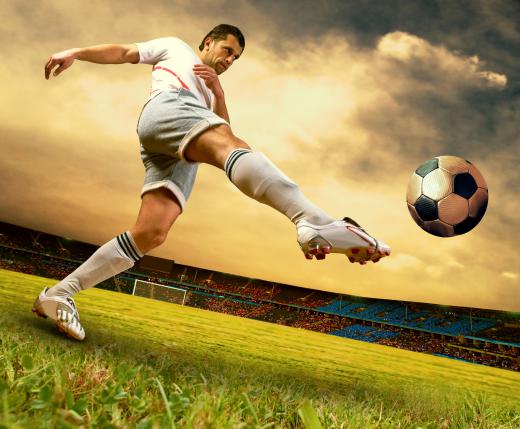An offsides trap is a play made during a soccer (football) game in an attempt to force an offsides call against the opposing team. When a team is offsides, it loses possession of the ball, and possession is given to the defending team. The offsides trap can be a very effective maneuver, as it can quickly put an end to a strong offensive play. At the same time, this play can be very dangerous, because if it fails, it leaves the defending team's goal very vulnerable.
A soccer player is called offsides if he is closer to the goal than any of the defenders except the goal keeper and the ball is passed to him or her. The ball can only be passed to players who are further forward than the last defensive player. Offensive players often wait near the goal in an attempt to be in a good scoring position when a teammate passes them the ball. This is the perfect setup for an offsides trap.

To perform the play, the defending players move to the same area of the field as the offensive player who is closest to the goal. When the offensive player with the ball is about to make a pass to the player close to the goal, the defensive players all move towards midfield. They attempt to trap the offensive player offsides, by moving so that he or she is closer to the goal than they are. If the offsides trap works, the ball is passed while the offensive player is closer to the goal than the defenders, the referee calls him or her offsides, and the defending team gains possession of the ball.

If the play does not work, it can be quite dangerous for the defending team. If the offensive player close to the goal notices the trap, he or she can also move towards midfield, staying ahead of the defensive players who are trying to trap him offsides. The player can then receive a legal pass, but because the defenders were attempting to make an offsides trap, they are out of good defensive positions. The offensive player with the ball can quickly make a run on the goal, with only the goal keeper to stop the score.
An offsides trap is a tricky maneuver, requiring teamwork, surprise, and an observant referee. If the trap works perfectly, it means a quick turn around for the defenders. When this play fails, it often means an easy goal for the offensive team. One thing is for certain: the offsides trap is one of the many risky maneuvers that makes a soccer game so exciting.
